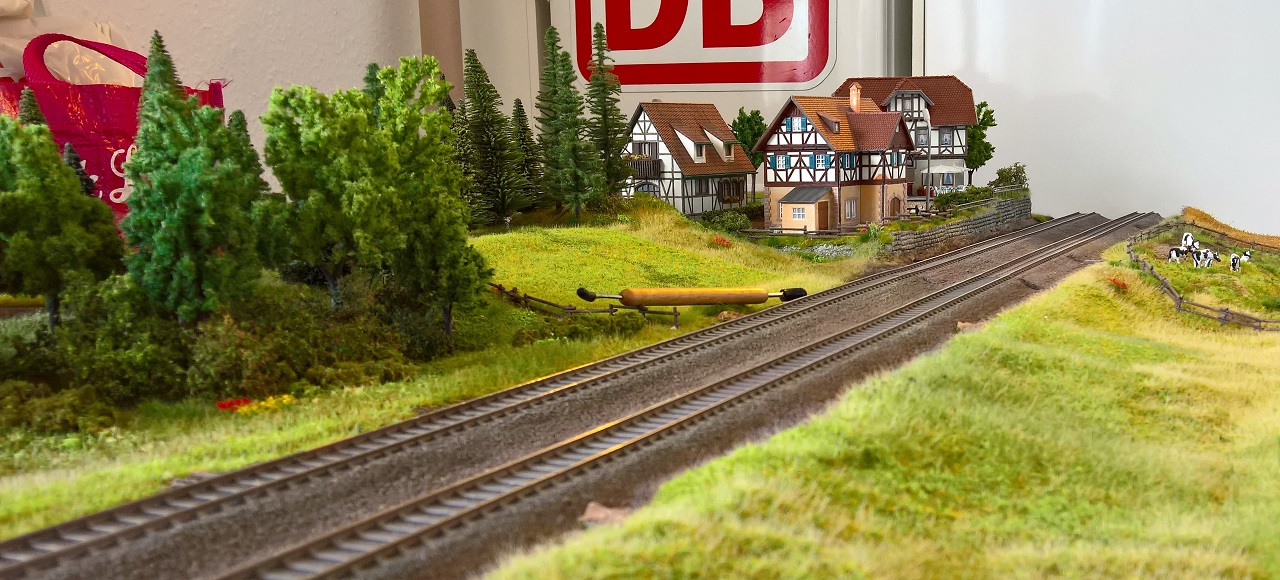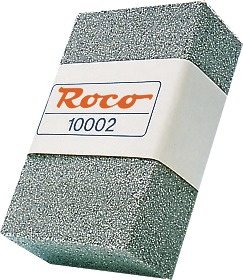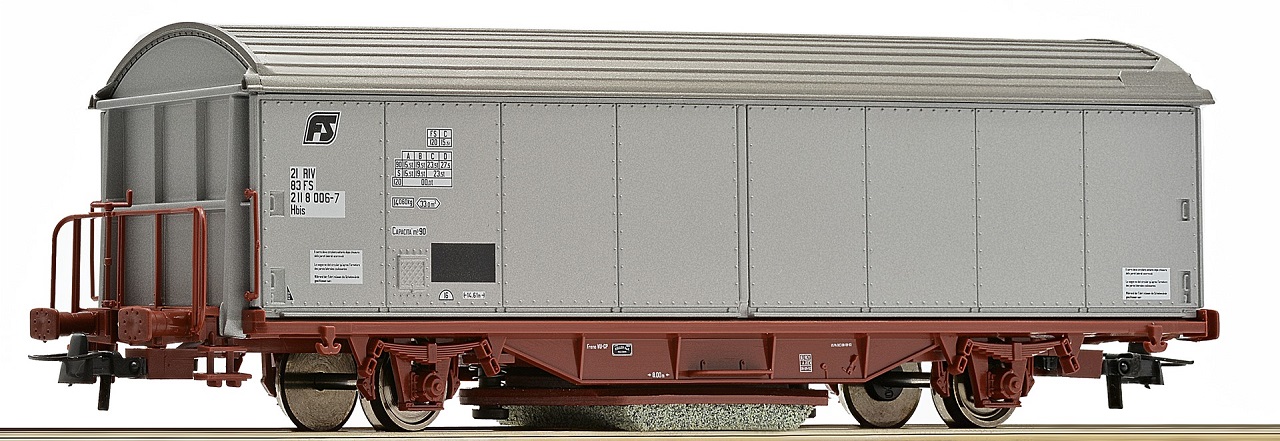How To Clean Model Railway Tracks
 Track cleaning, a subject with around just as many opinions as
the number of people you ask. This article is about how I clean my tracks, and what products I use.
I am not saying that this is the only way, I am just saying that it works for me.
Track cleaning, a subject with around just as many opinions as
the number of people you ask. This article is about how I clean my tracks, and what products I use.
I am not saying that this is the only way, I am just saying that it works for me.
Why Do Tracks Get Dirty?
Model railway tracks get dirty. That is the way it is, you cannot avoid it, and it will influence on your train's ability to run well. Tracks get dirty from the grease that is in the locomotive gears, and from the rubber tires that some locomotives have. You might also have some dust and other stuff getting in the way.
You will often know then your tracks are dirty. The symptoms are easy to spot: The locomotives collectively does not run well, and they often fail in the same sections of the layout. You might also find small black dots on your track. The small dots is basically dirt piling up.
This can only mean one thing: It is time to clean the track!
How I Clean My Tracks
I use Roco Rubber, combined with Roco track cleaning wagons. This combination gives me flawless operation. I never use any solvents on my track. In my opinion solvents and model railways simply do not go together. You risk ruining more than you gain.

Roco Rubber
(10002) Photo: Roco.
I usually go over my track with Roco Rubber before an operating session. This gives me a solid clean track to start with, and it will work flawlessly for a long time to come. Some parts of the layout goes for months without cleaning, others are cleaned more often. I guess it depends on your layout, how many trains passing through a section, and where the layout is physically located (room, basement, attic etc.).
If I have the time for it, I assemble a maintenance train and run the track cleaning wagon around the layout. Just for the run of it. When using Roco Rubber in the first place, the track cleaning wagon is not really needed. But hey, running trains is what this is all about right?
Track Cleaning Wagons
Roco also produces a bunch of track cleaning wagons that are basically the same goods wagon in different liveries. The idea is that you can install a track cleaning wagon into one of your already running trains and have them keep the amount of dust and dirt at an always low minimum. I enjoy assembling a maintenance train and run it around the layout.
There are several variants available, the most well known being the "Roco Clean" version that have been around for ages. The wagon has a pad of the Roco Rubber material underneath that touches the track. The pad is sprung loaded, so it will negotiate point work and uneven track work.

The standard "Roco Clean"
track cleaning wagon (Roco 46400). Photo: Roco.
There are also several other liveries available and Roco changes them from time to time. They are always liveries of the same freight car type, and some of the liveries might be considered fantasy, since they never really existed, but hey, it is for track cleaning, so I can live with that.
 An Italian version of the Roco
track cleaning wagon (Roco 67577). Photo: Roco.
An Italian version of the Roco
track cleaning wagon (Roco 67577). Photo: Roco.
The pads will eventually get really, really dirty so you might want to brush some of the dirt of them at regular intervals. Replacement pads are available (Roco 40019).
Tip! Always place the track cleaning wagon behind the pulling locomotive or simply push the wagon. The wagon is very heavy, so placing it behind a string of wagons will cause a lot of tension on the couplers. This can cause couplers to give in.
Wait! I Have Heard That Rubber Type Cleaners Damage The Track?
Let me debunk this myth. The assumption is that using rubber type cleaners destroy the track by introducing small scratches. Just as you would think sand paper would do. The idea is that the scratches would then introduce even worse running conditions, because the dirt can now accumulate in those scratches as well. So I've been told...
Answer: Not really! Although you might introduce small scratches in the rails by using a rubber cleaner, the scratches are so tiny that it does not really matter anyway. Rubber cleaners have been around for ages, and club layouts I know use them all the time, some of these layouts have been in operation for over 20 years. They do not have any problems, and their track still looks awesome. There is simply no proof to back the assumption up. On the other hand: The amount of happy customers using Roco Rubber speaks for itself.
If you are still unsure about this, ask yourself this question: Have you, not your friend, not your fellow club member, but you, personally, ever had any real experience with rubber cleaners destroying tracks? My bet would be no, it is "just something you've heard". I have never seen any proof to back this up.
Just so we are clear: What ever you do, never use sand paper or motor oil (as I have actually heard some people recommend)!
Happy Modelling!